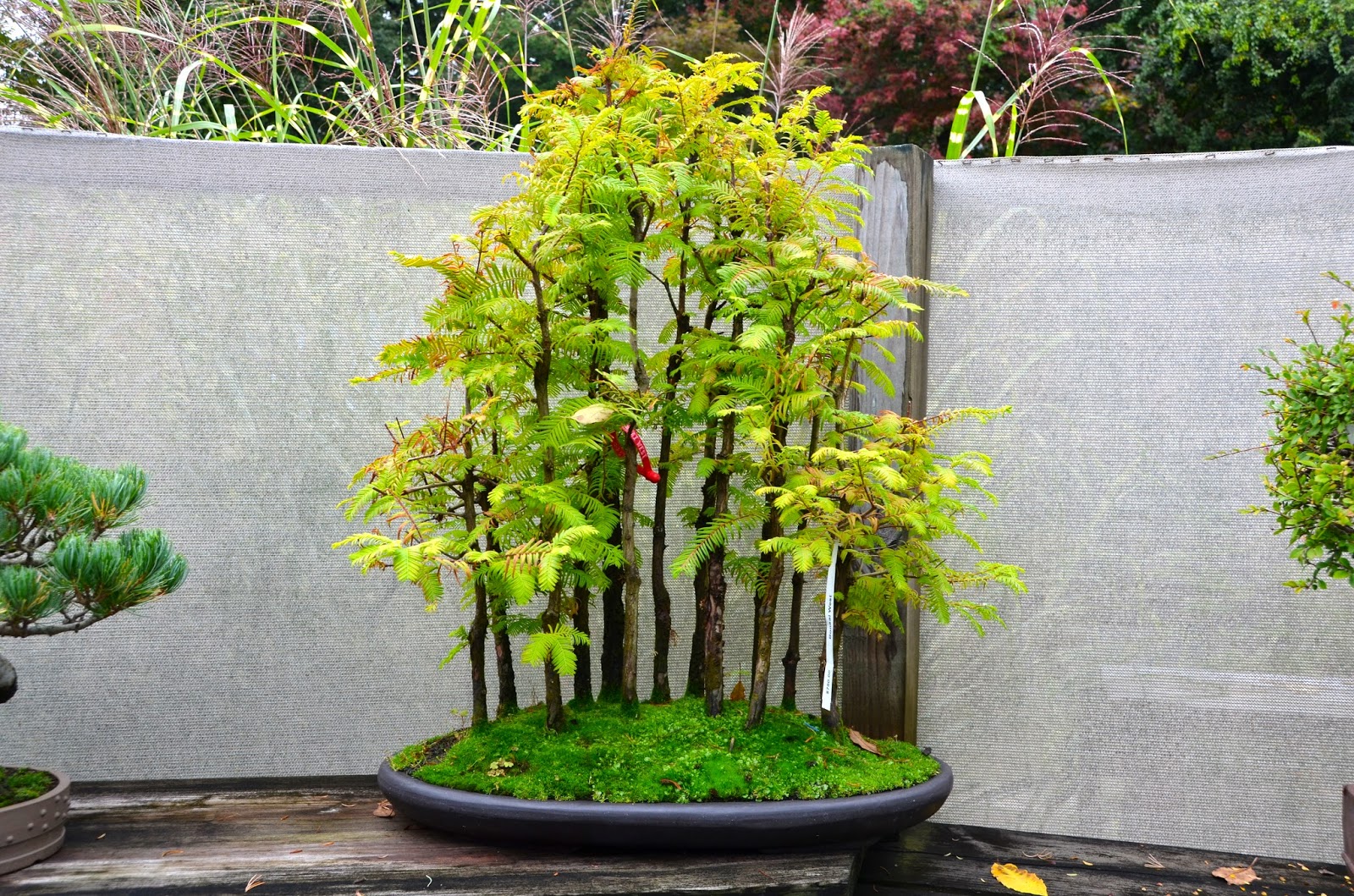I have spent most of the week mentally shifting gears from wedding work, and preparing for a kokedama workshop next week. I will be teaching at the Cambridge Center for Adult Education in Harvard Square, and I'm looking forward to the opportunity to meet some new people.
Kokedama is an adaptation and modification of bonsai. Both art forms involve the manipulation of a plant's root system, but in typical kokedama fashion, the root system is designed to fit into a ball of mud. The mud ball is composed of potting soil, peat and akadama (Japanese clay), creating a design that can stand alone. Bonsai, on the other hand, are designed in pots or trays, and the growth of the plant is slowed and controlled by reducing the ability for the roots to spread.
Prior to the invention of kokedama in Japan, a movement from potted designs to plated or stand-alone designs had begun to take shape. In this interim style, called Nearai (pronounced Nyarai), the plant was removed from its pot, in order to display the root system in wabi-sabi style (transient and imperfect). This aesthetic would later translate to the creation of kokedama.
Kokedama, which are also referred to as "string gardens", are often displayed by suspending them from a ceiling or tree limb. They definitely make a statement, especially when you see them designed in groupings. I have not yet had the opportunity to create a kokedama string garden, but if given the right setting (a floor that could handle dripping), I would do it in a heartbeat.
 |
| source |
First on the list of stops was Northeast Nursery, to choose some plants for my sample designs. In keeping with the fall season, I chose a petite cabbage, a mini-mum, and an oregano plant (for its color and unstructured shape). Next up was Bonsai West, where the visual stimulation was on overdrive. It was the perfect place to get the creative juices flowing, and to take some time to learn a bit more about bonsai. I learned that most of the species of trees used in bonsai are not water lovers, and therefore would not be ideal for the purpose of kokedama: good to know! The cherry eugenia, however, does tolerate water and somewhat moist conditions, so it might be a viable choice in the future. I decided that it probably wasn't a good time to try anything new, as I would not want the workshop results to be anything less than ideal. I made a few purchases to test-drive on my own, in the hopes of opening up the possibilities for future designs.
What makes these quirky balls of mossy art so popular right now, and why can't people get enough of them? Maybe it's because the process of making kokedama is intended to be relaxing, or maybe it's the fact that they are low maintenance, and require minimal watering. You don't even have to have a green thumb to keep these babies alive. Or could it be the mystery that surrounds these unique designs, and the fascination about how they stay together. The answer? Japanese clay.







No comments :
Post a Comment
I love feedback, please comment...